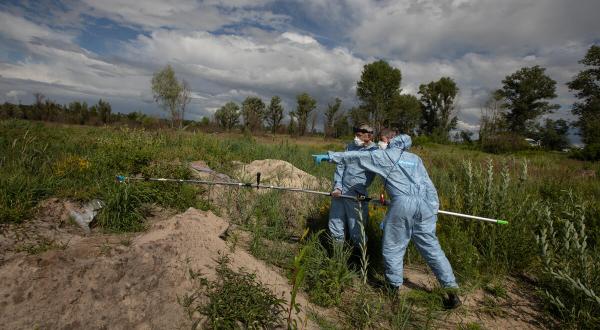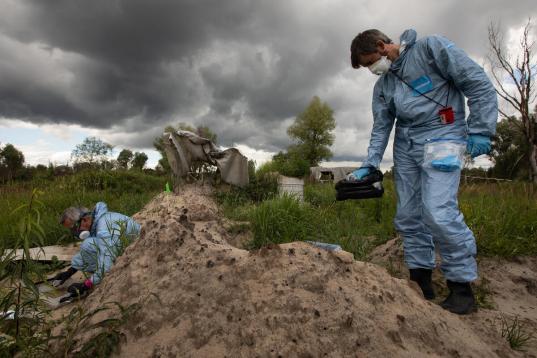
Greenpeace radiation investigation at Chornobyl
- Recherche
The people of Ukraine are suffering the catastrophe of an illegal war waged by the Russian government. On the very first day of that war, 24 February 2022, the Russian military invaded and seized the Chornobyl nuclear plant. The scene of the worst nuclear disaster in history was also one of the early targets. In a unique and terrible development in the history of nuclear power, it was the first of two nuclear facilities in Ukraine to be attacked by Russia. On the 4th March the six reactors at the Zaporizhzia in southern Ukraine were seized.
Under Russian occupation, what happened to the scientists and their facilities at Chornobyl, as well as to the radioactive environment which remains heavily contaminated ? In the first instance these are critically important for the people of Ukraine. They are also of global importance. Greenpeace has worked on and investigated Chornobyl since 1986. Some of the reports coming out of Ukraine in March and April 2022, including from the International Atomic Energy Agency (IAEA), did not sound right. After several months of planning, Greenpeace Germany was granted permission by the State Agency of Ukraine on Exclusion Zone Management (SAUEZM) to visit Chornobyl and to conduct a radiation survey work inside the 2,600km2 highly contaminated Exclusion Zone.
Understanding the impact of the Russian military occupation of Chornobyl on the people who have dedicated their lives to managing one of the most radioactive contaminated areas on the planet, Greenpeace Germany concluded its week-long investigation in Ukraine on 20 July 2022, with survey work in Chornobyl from 15-18th July. In an effort to explore and explain some of the complex radiological issues and the preliminary results of our work in Chornobyl, we have prepared this story map. A disaster of such an enormous scale, it is not possible within this format to explain the many, many impacts. But it might be possible to provide some additional insight into the radiation risks and the scientists whose job it is to investigate and try and protect public health and the environment from the worst impacts at the site. The Chornobyl disaster remains a human and environmental tragedy, with no end. In particular for those hundreds of thousands most severely affected and across generations it is a daily reality. This story map is an attempt to explain one small part of the recent history of Chornobyl and of Ukraine during wartime.
Pictured above: Jan Vande Putte (left) and Mathieu Soete (right), radiation protection advisors from Greenpeace Belgium, measuring with extended Kromek GR1 / CZT detector at abandoned Russian military dug trenches and defensive structures Yanov, Chornobyl exclusion zone, Ukraine, © Jeremy Sutton-Hibbert/ Greenpeace 17. July 2022
